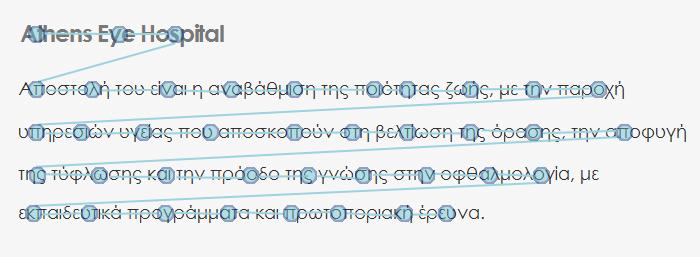By reading, our eyes perform small, involuntary, abrupt movements, which are called saccades. These movements are mainly from left to right and the gaze remains focused on the same spot for 10 to 50 hundredths of a second, long enough for the brain to understand a word or a group of words.

Saccades: The circles represent the focus points and the lines the saccades between the focus points. People with dyslexia remain longer in the same focal point due to their inability to recognize words.
It has been noticed that the saccades in dyslexic individuals have a shorter range and a longer focus on the same point, indicating their inability to recognize large parts of words. Corresponding rate of saccades are observed in people without dyslexia, when reading a complex and obscure technical text.
The difficulty in reading leads children with dyslexia in reading in syllables, with a monotonous voice and without stressing the syllables and the words that they read are characterized by abbreviations, inversions and omissions.
So the dyslexic child will read "prak" instead of "park" or even replace a whole word, such as "white" instead of "bright" etc. The dyslexic children do not understand the text they read and they never read by themselves, only if requested.
 German
German Ελληνικά
Ελληνικά